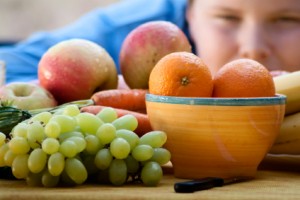 Childhood obesity is a national epidemic. Observing the numbers of youth currently experiencing this trend and the projected outcomes are staggering.
Childhood obesity is a national epidemic. Observing the numbers of youth currently experiencing this trend and the projected outcomes are staggering.
- Over 30 percent or 23 million youth between the ages of 2 – 19 are obese or overweight (1 in 2 minority children)
- Overweight and obese youth are at high risk to develop heart disease, high blood pressure, type 2 diabetes, sleep apnea, stroke, several types of cancer, and osteoarthritis
- Overweight and obese youth is also at risk for psychosocial problems that can hinder academic and social functioning and persist into adulthood
- Overweight and obese youth are more likely to become overweight and obese adult
If current trends continue, 1-in-3 children born after 2000 will develop diabetes in their lifetime. That is why in 2010, September was declared National Childhood Obesity Awareness Month. Although the fight to reduce, this epidemic should be discussed year-round, having an opportunity for national and community leaders to converge and discuss this underreported problem annually is progress.
September brings great opportunity for parents to take an active role in preventing childhood obesity. With the new start of the school year, parents can discuss topics related to childhood obesity with their school administrators, teachers and child care providers. Families also can be the first line of defense in the home. Parents can decrease the likelihood of childhood obesity negatively affecting the household; by incorporating new techniques into family nutrition and physical activity experiences
Make meal time, family time – By sitting together as a family to eat a meal, parents pass on valuable life skills and information to their children. Parents may seize this as a perfect opportunity to share the importance of healthy living through nutritious eating and physical activity. If this is something lacking in your family current meal planning, consider September an opportunity to start a new tradition by eating at least one meal a week together. During those meals begin to discuss different aspects of healthy eating and physical activity and develop a plan to improve everyone’s health and decrease the chances of childhood obesity negatively affecting the younger members.
Kids in the kitchen – Some parents believe having kids help in the kitchen is time-consuming, they would get in the way and overall it is a waste of time and energy. This is not true. In fact, allowing children to take an active role in meal preparation is an excellent educational opportunity. From the grocery store to clean up children can learn about cost analysis, food safety, nutrition, recipes, ingredients, food composting and recycling.
Even children as young as 2 years of age can assist with mealtime decisions. From helping parents pick out fresh fruits and vegetables at the store, measuring and mixing ingredients and setting the kitchen table, younger kids can be just as helpful as older ones.
Keep the energy going as kids age by allowing their input in healthy recipe modifications, assisting with chopping fresh fruits, vegetables, meats and bread and having one night a week where the children are ultimately responsible for dinner (including cost analysis and clean up).
Family physical activity – Family physical activity time is not only healthy, but a great way to bond and learn about each other’s interest outside of the home. Plus, not only are the children getting their recommended daily physical activity completed so are parents!
Be a health role model – The days of “do as I say, not as I do” have come and gone. Research tells us that from birth parents are their children’s first and primary role model. That is why it is significant for parents to model the behaviors that they would like to teach their children. This includes eating and physical activity behaviors too. Purchasing, preparing and eating healthy food options and including at least 30 minutes or more of physical activity a day is a good start.
References:
Office of Disease Prevention and Health Promotion: U.S. Department of Health and Human Services.(2014).National Childhood Obesity Awareness Toolkit. http://www.healthfinder.gov/NHO/PDFs/SeptemberNHOToolkit.pdf
National Childhood Obesity Awareness Toolkit Month Toolkit. (2012). http://healthierkidsbrighterfutures.org/?s=National+Childhood+Obesity+Awareness+Toolkit+Month+Toolkit
Visit us online at www.pvamu.edu/cahs
